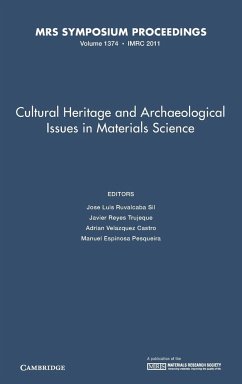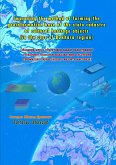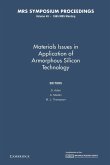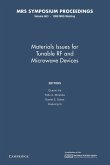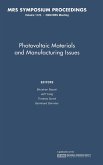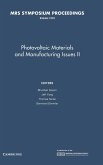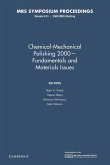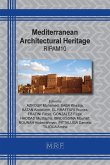Cultural Heritage and Archaeological Issues in Materials Science
Herausgeber: Ruvalcaba Sil, Jose Luis; Velazquez Castro, Adrian; Reyes Trujeque, Javier
Cultural Heritage and Archaeological Issues in Materials Science
Herausgeber: Ruvalcaba Sil, Jose Luis; Velazquez Castro, Adrian; Reyes Trujeque, Javier
- Gebundenes Buch
- Merkliste
- Auf die Merkliste
- Bewerten Bewerten
- Teilen
- Produkt teilen
- Produkterinnerung
- Produkterinnerung
This volume of proceedings is the first one to bear the title Cultural Heritage and Archaeological Issues in Materials Science.
Andere Kunden interessierten sich auch für
![Improving the method of forming the geoinformation base of the state cadastre of cultural heritage objects Improving the method of forming the geoinformation base of the state cadastre of cultural heritage objects]() Sattorov ShaxzodImproving the method of forming the geoinformation base of the state cadastre of cultural heritage objects27,99 €
Sattorov ShaxzodImproving the method of forming the geoinformation base of the state cadastre of cultural heritage objects27,99 €![Materials Issues in Applications of Amorphous Silicon Technology Materials Issues in Applications of Amorphous Silicon Technology]() Materials Issues in Applications of Amorphous Silicon Technology42,99 €
Materials Issues in Applications of Amorphous Silicon Technology42,99 €![Materials Issues for Tunable RF and Microwave Devices Materials Issues for Tunable RF and Microwave Devices]() Materials Issues for Tunable RF and Microwave Devices39,99 €
Materials Issues for Tunable RF and Microwave Devices39,99 €![Photovoltaic Materials and Manufacturing Issues Photovoltaic Materials and Manufacturing Issues]() Photovoltaic Materials and Manufacturing Issues143,99 €
Photovoltaic Materials and Manufacturing Issues143,99 €![Photovoltaic Materials and Manufacturing Issues II Photovoltaic Materials and Manufacturing Issues II]() Photovoltaic Materials and Manufacturing Issues II126,99 €
Photovoltaic Materials and Manufacturing Issues II126,99 €![Chemical-Mechanical Polishing 2000 Fundamentals and Materials Issues Chemical-Mechanical Polishing 2000 Fundamentals and Materials Issues]() Chemical-Mechanical Polishing 2000 Fundamentals and Materials Issues38,99 €
Chemical-Mechanical Polishing 2000 Fundamentals and Materials Issues38,99 €![Mediterranean Architectural Heritage Mediterranean Architectural Heritage]() Mediterranean Architectural Heritage117,99 €
Mediterranean Architectural Heritage117,99 €-
-
-
This volume of proceedings is the first one to bear the title Cultural Heritage and Archaeological Issues in Materials Science.
Hinweis: Dieser Artikel kann nur an eine deutsche Lieferadresse ausgeliefert werden.
Hinweis: Dieser Artikel kann nur an eine deutsche Lieferadresse ausgeliefert werden.
Produktdetails
- Produktdetails
- Verlag: Cambridge University Press
- Seitenzahl: 314
- Erscheinungstermin: 13. Dezember 2012
- Englisch
- Abmessung: 235mm x 157mm x 21mm
- Gewicht: 608g
- ISBN-13: 9781605113517
- ISBN-10: 1605113514
- Artikelnr.: 36957814
- Herstellerkennzeichnung
- Libri GmbH
- Europaallee 1
- 36244 Bad Hersfeld
- gpsr@libri.de
- Verlag: Cambridge University Press
- Seitenzahl: 314
- Erscheinungstermin: 13. Dezember 2012
- Englisch
- Abmessung: 235mm x 157mm x 21mm
- Gewicht: 608g
- ISBN-13: 9781605113517
- ISBN-10: 1605113514
- Artikelnr.: 36957814
- Herstellerkennzeichnung
- Libri GmbH
- Europaallee 1
- 36244 Bad Hersfeld
- gpsr@libri.de
Part I. Non-Destructive Characterization of Cultural Heritage: 1. Formation
of hyperspectral near-infrared images from artworks; 2. Study of colonial
manuscripts from San Nicolás Coatepec, México, through UV and IR imaging
and XRF; Part II. Technical Studies in Art History: 3. Chromatographic
investigations of purple archaeological bio-material pigments used as
biblical dyes; 4. Characterization of a natural dye by spectroscopic and
chromatographic techniques; 5. The influence of glass in the color of red
lakes layers in oil painting: a case study in a pictorial series attributed
to Murillo located in Guadalajara, Mexico; 6. Xavier Guerrero, de México a
Chile (from Mexico to Chile), some remarks about the use of Portland cement
in Mexican muralism; Part III. Archaeological Science: 7. Foreing produced
shell objects in the Templo Mayor of Tenochtitlan; 8. Technological and
material characterization of lapidary artifacts from Tamtoc archaeological
site, Mexico; 9. Comparative study of two blue pigments from the Maya
Region of Yucatan; 10. Technical study of a set of metallic artifacts from
the Maya site of Lagartero, Chiapas, Mexico; 11. Identifying the criteria
for determining status burials by results of integrated analysis; 12. New
insights into ancient Maya building materials: characterization of mortar,
plaster, and coquina flagstones from Toniná; Part IV. Conversation Studies:
13. How to make a latex rubber sculpture? Manufacturing studies that
improve the creative work of an artist; 14. Decay degree determination of
archaeological shell objects from the great temple of Tenochtitlan, using a
visible light spectrometer; 15. Identification of microorganisms associated
to the biodegradation of historic masonry structure in San Francisco de
Campeche City, México; 16. Chemical evolution of the volcanic tuff from the
Santa Mónica church in Guadalajara, Mexico; 17. Correlation of atmospheric
dust and rainfall as basalt chemical weathering precursors; 18. Additions
of minerals in clays of Morelia Region, Mexico: effects on volumetric
stabilization and color; Part V. Biomaterials Topics: 19. Trace element
analysis of bone from past populations in the peninsula of Yucatan; 20.
Morphometric characterization of the maize: a case study in postclassic
Xaltocan; 21. Self sacrifice awls in Cantona, Puebla, Mexico; Part VI.
Methodologies and Instrumentation: 22. Silver nanoparticles for SERS
identification of dyes; 23. Photoacoustic analysis of natural indigo,
Palygorskite and synthetic Maya blue; 24. Site-specific analysis of
deformation patterns on archaeological heritage by satellite radar
interferometry.
of hyperspectral near-infrared images from artworks; 2. Study of colonial
manuscripts from San Nicolás Coatepec, México, through UV and IR imaging
and XRF; Part II. Technical Studies in Art History: 3. Chromatographic
investigations of purple archaeological bio-material pigments used as
biblical dyes; 4. Characterization of a natural dye by spectroscopic and
chromatographic techniques; 5. The influence of glass in the color of red
lakes layers in oil painting: a case study in a pictorial series attributed
to Murillo located in Guadalajara, Mexico; 6. Xavier Guerrero, de México a
Chile (from Mexico to Chile), some remarks about the use of Portland cement
in Mexican muralism; Part III. Archaeological Science: 7. Foreing produced
shell objects in the Templo Mayor of Tenochtitlan; 8. Technological and
material characterization of lapidary artifacts from Tamtoc archaeological
site, Mexico; 9. Comparative study of two blue pigments from the Maya
Region of Yucatan; 10. Technical study of a set of metallic artifacts from
the Maya site of Lagartero, Chiapas, Mexico; 11. Identifying the criteria
for determining status burials by results of integrated analysis; 12. New
insights into ancient Maya building materials: characterization of mortar,
plaster, and coquina flagstones from Toniná; Part IV. Conversation Studies:
13. How to make a latex rubber sculpture? Manufacturing studies that
improve the creative work of an artist; 14. Decay degree determination of
archaeological shell objects from the great temple of Tenochtitlan, using a
visible light spectrometer; 15. Identification of microorganisms associated
to the biodegradation of historic masonry structure in San Francisco de
Campeche City, México; 16. Chemical evolution of the volcanic tuff from the
Santa Mónica church in Guadalajara, Mexico; 17. Correlation of atmospheric
dust and rainfall as basalt chemical weathering precursors; 18. Additions
of minerals in clays of Morelia Region, Mexico: effects on volumetric
stabilization and color; Part V. Biomaterials Topics: 19. Trace element
analysis of bone from past populations in the peninsula of Yucatan; 20.
Morphometric characterization of the maize: a case study in postclassic
Xaltocan; 21. Self sacrifice awls in Cantona, Puebla, Mexico; Part VI.
Methodologies and Instrumentation: 22. Silver nanoparticles for SERS
identification of dyes; 23. Photoacoustic analysis of natural indigo,
Palygorskite and synthetic Maya blue; 24. Site-specific analysis of
deformation patterns on archaeological heritage by satellite radar
interferometry.
Part I. Non-Destructive Characterization of Cultural Heritage: 1. Formation
of hyperspectral near-infrared images from artworks; 2. Study of colonial
manuscripts from San Nicolás Coatepec, México, through UV and IR imaging
and XRF; Part II. Technical Studies in Art History: 3. Chromatographic
investigations of purple archaeological bio-material pigments used as
biblical dyes; 4. Characterization of a natural dye by spectroscopic and
chromatographic techniques; 5. The influence of glass in the color of red
lakes layers in oil painting: a case study in a pictorial series attributed
to Murillo located in Guadalajara, Mexico; 6. Xavier Guerrero, de México a
Chile (from Mexico to Chile), some remarks about the use of Portland cement
in Mexican muralism; Part III. Archaeological Science: 7. Foreing produced
shell objects in the Templo Mayor of Tenochtitlan; 8. Technological and
material characterization of lapidary artifacts from Tamtoc archaeological
site, Mexico; 9. Comparative study of two blue pigments from the Maya
Region of Yucatan; 10. Technical study of a set of metallic artifacts from
the Maya site of Lagartero, Chiapas, Mexico; 11. Identifying the criteria
for determining status burials by results of integrated analysis; 12. New
insights into ancient Maya building materials: characterization of mortar,
plaster, and coquina flagstones from Toniná; Part IV. Conversation Studies:
13. How to make a latex rubber sculpture? Manufacturing studies that
improve the creative work of an artist; 14. Decay degree determination of
archaeological shell objects from the great temple of Tenochtitlan, using a
visible light spectrometer; 15. Identification of microorganisms associated
to the biodegradation of historic masonry structure in San Francisco de
Campeche City, México; 16. Chemical evolution of the volcanic tuff from the
Santa Mónica church in Guadalajara, Mexico; 17. Correlation of atmospheric
dust and rainfall as basalt chemical weathering precursors; 18. Additions
of minerals in clays of Morelia Region, Mexico: effects on volumetric
stabilization and color; Part V. Biomaterials Topics: 19. Trace element
analysis of bone from past populations in the peninsula of Yucatan; 20.
Morphometric characterization of the maize: a case study in postclassic
Xaltocan; 21. Self sacrifice awls in Cantona, Puebla, Mexico; Part VI.
Methodologies and Instrumentation: 22. Silver nanoparticles for SERS
identification of dyes; 23. Photoacoustic analysis of natural indigo,
Palygorskite and synthetic Maya blue; 24. Site-specific analysis of
deformation patterns on archaeological heritage by satellite radar
interferometry.
of hyperspectral near-infrared images from artworks; 2. Study of colonial
manuscripts from San Nicolás Coatepec, México, through UV and IR imaging
and XRF; Part II. Technical Studies in Art History: 3. Chromatographic
investigations of purple archaeological bio-material pigments used as
biblical dyes; 4. Characterization of a natural dye by spectroscopic and
chromatographic techniques; 5. The influence of glass in the color of red
lakes layers in oil painting: a case study in a pictorial series attributed
to Murillo located in Guadalajara, Mexico; 6. Xavier Guerrero, de México a
Chile (from Mexico to Chile), some remarks about the use of Portland cement
in Mexican muralism; Part III. Archaeological Science: 7. Foreing produced
shell objects in the Templo Mayor of Tenochtitlan; 8. Technological and
material characterization of lapidary artifacts from Tamtoc archaeological
site, Mexico; 9. Comparative study of two blue pigments from the Maya
Region of Yucatan; 10. Technical study of a set of metallic artifacts from
the Maya site of Lagartero, Chiapas, Mexico; 11. Identifying the criteria
for determining status burials by results of integrated analysis; 12. New
insights into ancient Maya building materials: characterization of mortar,
plaster, and coquina flagstones from Toniná; Part IV. Conversation Studies:
13. How to make a latex rubber sculpture? Manufacturing studies that
improve the creative work of an artist; 14. Decay degree determination of
archaeological shell objects from the great temple of Tenochtitlan, using a
visible light spectrometer; 15. Identification of microorganisms associated
to the biodegradation of historic masonry structure in San Francisco de
Campeche City, México; 16. Chemical evolution of the volcanic tuff from the
Santa Mónica church in Guadalajara, Mexico; 17. Correlation of atmospheric
dust and rainfall as basalt chemical weathering precursors; 18. Additions
of minerals in clays of Morelia Region, Mexico: effects on volumetric
stabilization and color; Part V. Biomaterials Topics: 19. Trace element
analysis of bone from past populations in the peninsula of Yucatan; 20.
Morphometric characterization of the maize: a case study in postclassic
Xaltocan; 21. Self sacrifice awls in Cantona, Puebla, Mexico; Part VI.
Methodologies and Instrumentation: 22. Silver nanoparticles for SERS
identification of dyes; 23. Photoacoustic analysis of natural indigo,
Palygorskite and synthetic Maya blue; 24. Site-specific analysis of
deformation patterns on archaeological heritage by satellite radar
interferometry.

